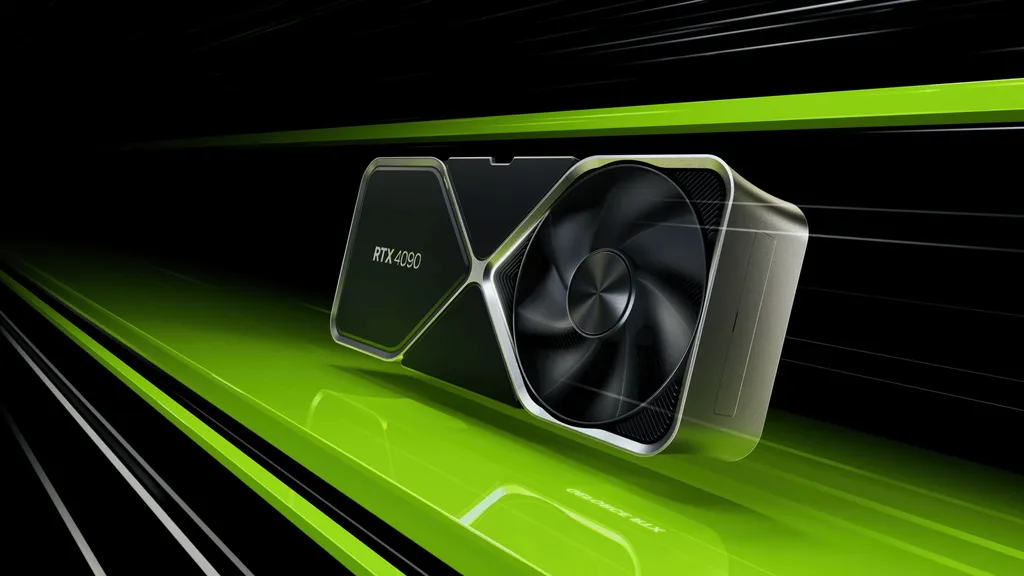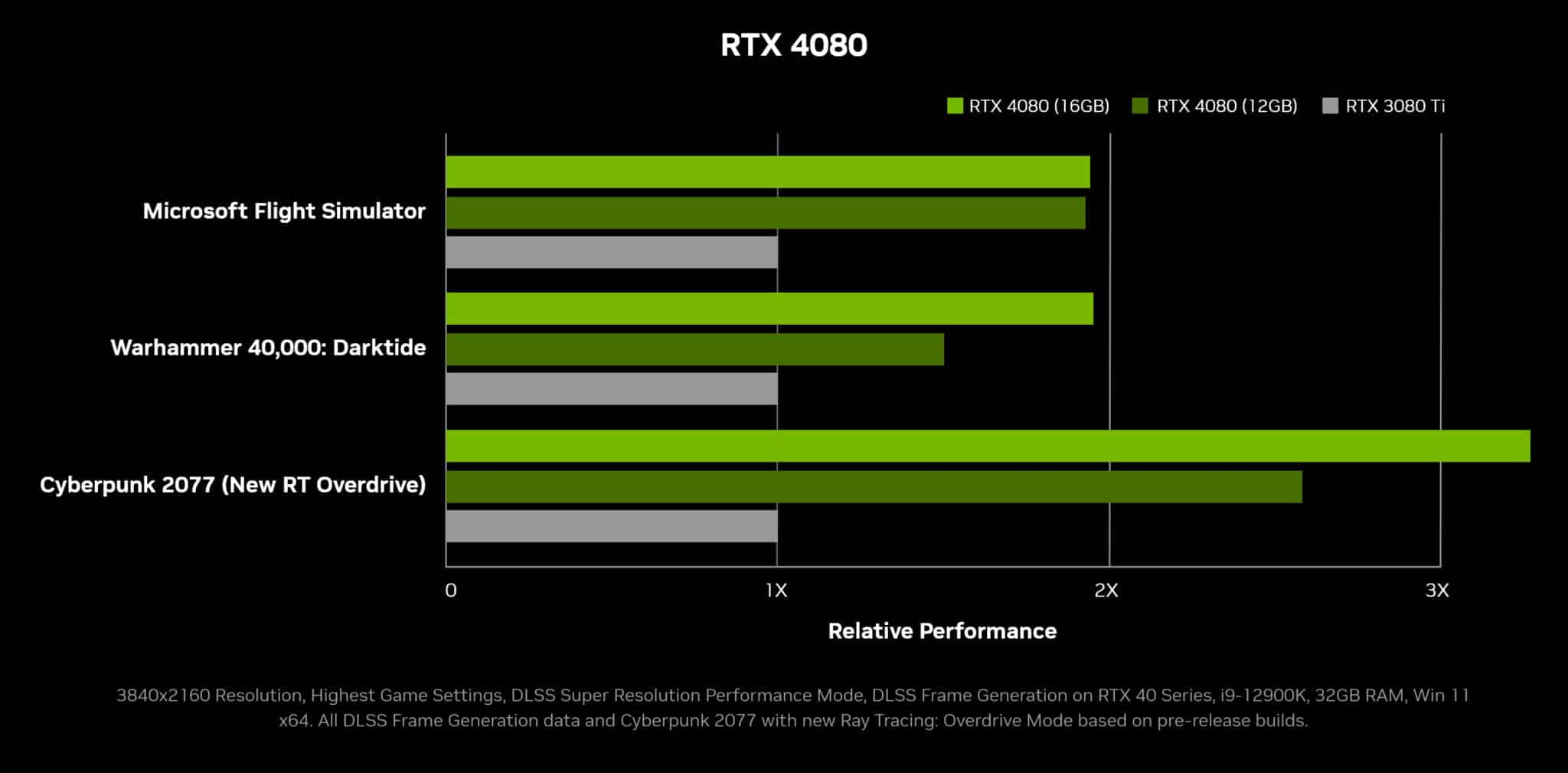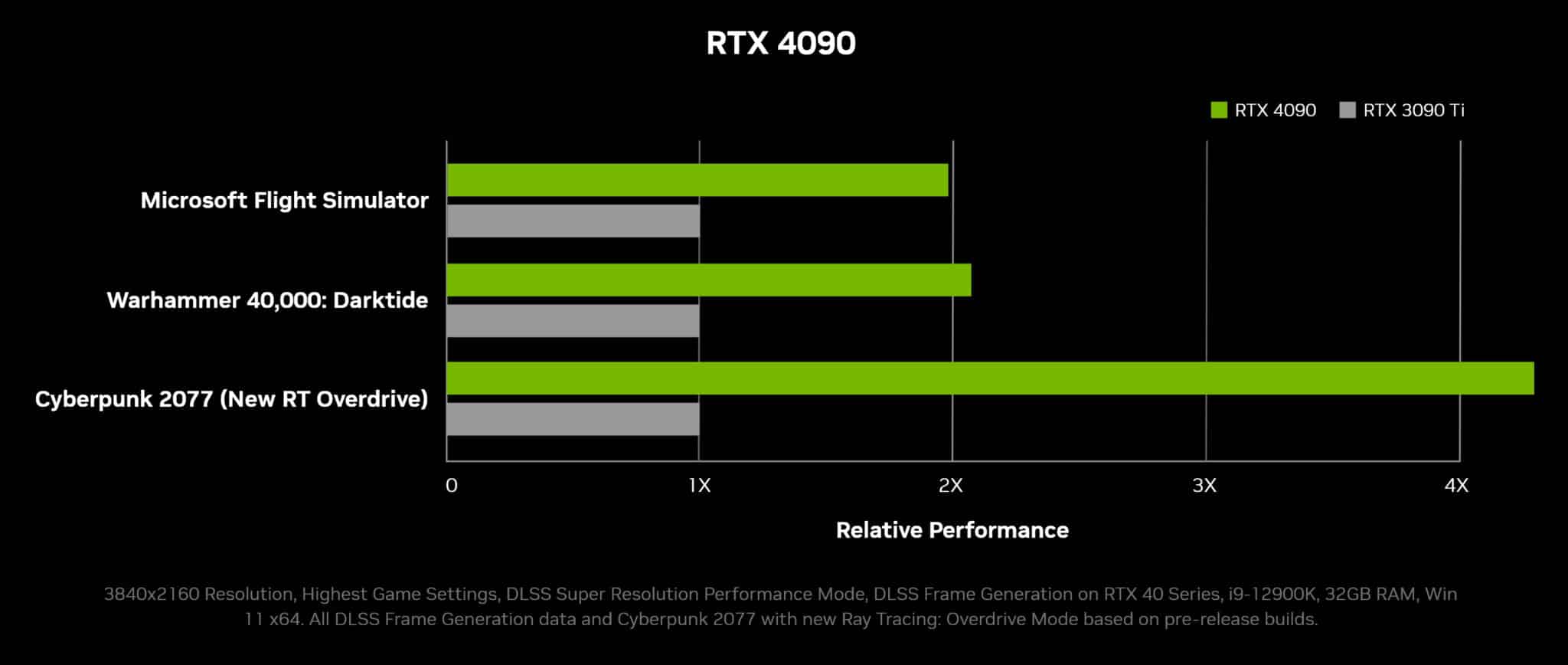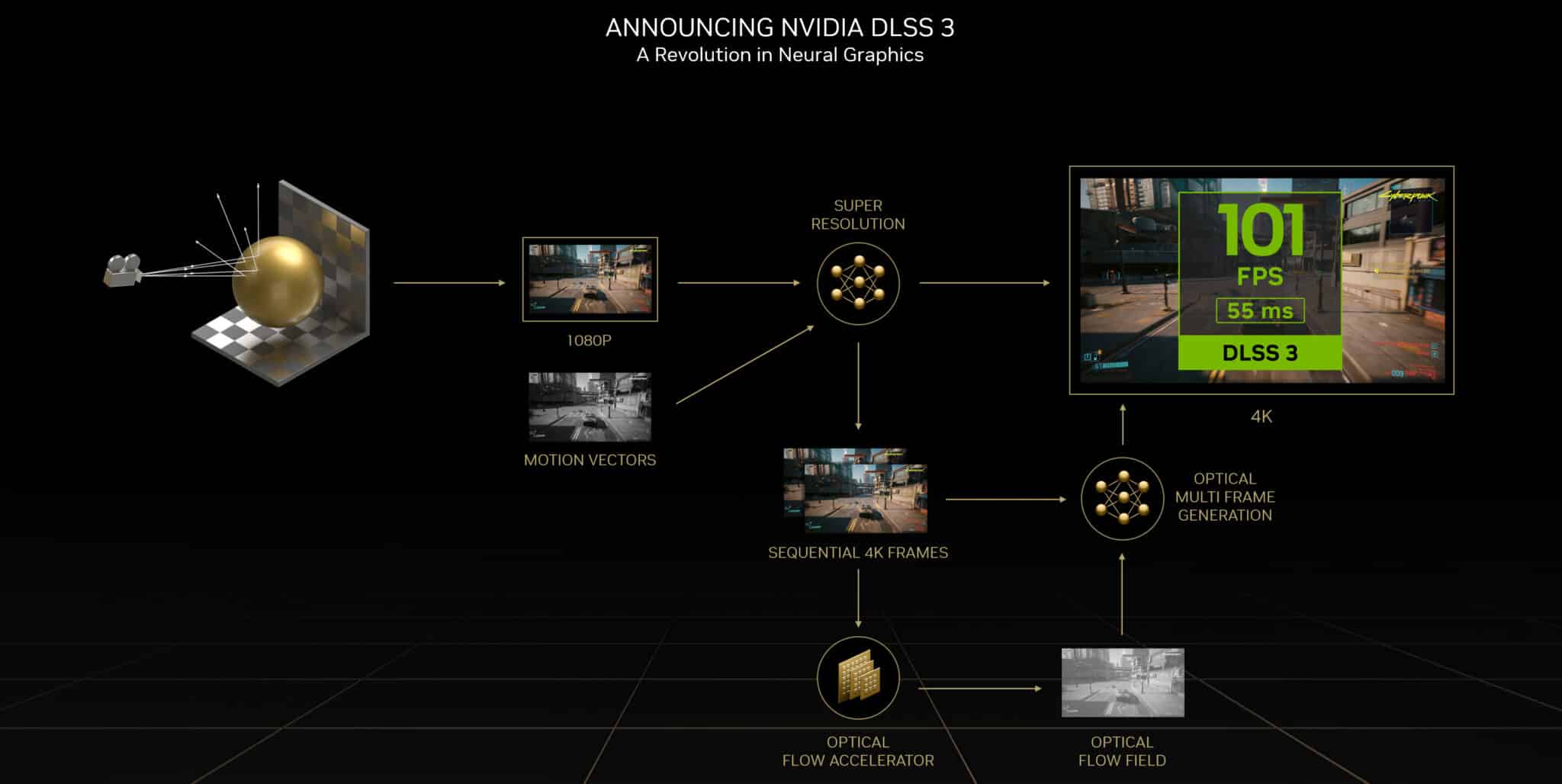NVIDIA just unveiled the first of its next-generation GeForce graphics cards: RTX 4080 and RTX 4090.
| Card | CUDA Cores | VRAM | Memory Interface | TFLOPS | MSRP |
| RTX 4080 (16GB) | 9728 | 16GB GDDR6X | 256-bit | 49 | $1199 |
| RTX 4090 | 16384 | 24GB GDDR6X | 384-bit | 83 | $1599 |
UPDATE October 14: NVIDIA “unlaunched” RTX 4080 (12GB) because having two similarly named cards with notably different performance is confusing.
RTX 4080
RTX 4080 has 9728 CUDA Cores and 16GB VRAM, priced starting at $1199.
NVIDIA claims it’s twice as powerful as the RTX 3080 Ti when using DLSS Frame Generation. However, we’ll need to wait for independent benchmarks to verify these claims.
| Card | Process | VRAM | TFLOPS | Launch MSRP |
| RTX 3080 Ti | 8nm | 12GB | 34 | $1199 |
| RTX 3090 Ti | 8nm | 24GB | 40 | $1999 |
| RTX 4080 | 4nm | 16GB | 49 | $1199 |
RTX 4080 will be available some time in November.
RTX 4090
RTX 4090 has 16384 CUDA Cores and 24GB VRAM, priced starting at $1599.
It achieves 83 teraflops of performance, making it the most powerful gaming GPU in the world.
NVIDIA claims RTX 4090 is twice as fast as the prior flagship RTX 3090 Ti when using DLSS Frame Generation. Again though, wait for independent benchmarks to be sure of this claim.
| Card | Process | VRAM | TFLOPS | Launch MSRP |
| RTX 3090 Ti | 8nm | 24GB | 40 | $1999 |
| RTX 4090 | 4nm | 24GB | 83 | $1599 |
RTX 4090 will be available on October 12.
‘Ada Lovelace’ Architecture
The RTX 40 series is powered by NVIDIA’s new ‘Ada Lovelace’ architecture, which introduces a number of improvements.
It’s built on TSMC’s 4nm process node – the previous ‘Ampere’ architecture used Samsung’s 8nm process node.
Third Generation Ray Tracing Cores enable more than 2x the ray tracing performance over Ampere’s. These new cores also introduce ‘Opacity Micro-Map Engines’ and ‘Micro-Mesh Engines’, two new hardware features to accelerate certain ray tracing workloads. Shader Execution Reordering improves shader performance by up to 2x when using ray tracing, which NVIDIA says improves framerate by 25%.
Fourth Generation Tensor Cores offer up to 5x the FP8 performance of Ampere’s. Combined with the new Optical Flow Accelerator this enables Deep Learning SuperSampling (DLSS) 3.0. Similar to the SpaceWarp and Motion Smoothing reprojection techniques used in VR for years now, DLSS 3.0 can generate synthetic frames to double the output framerate.
Finally the Eighth Generation NVIDIA Encoder introduces support for the AV1 video codec, which has 40% improved quality at the same bitrate and supports HDR (high dynamic range).
Will you be buying an RTX 4080 or 4090 for VR, or are you waiting for AMD’s response?

































